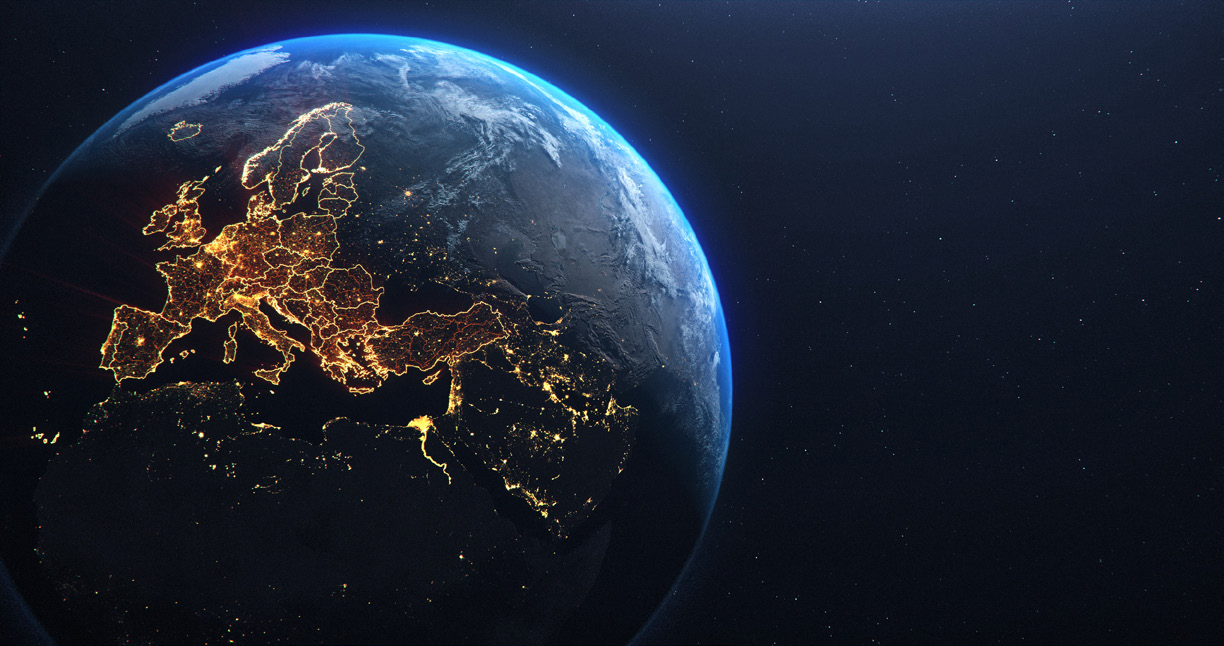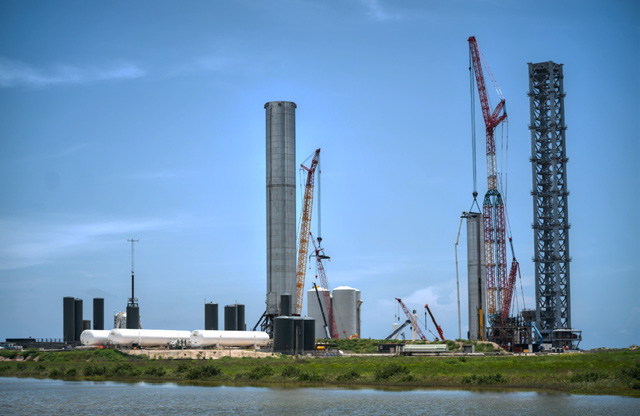Europe is suffering poorly with its rocket ambitions. Where it w as once the USA’s equal — and still matches it in terms of scientific mi ssions — it can no longer compare with the USA’s new-found resurgence in launch activity.

However, it is tough to compare and contrast the USA’s true might in rocketlaunch skills when you have the near-bottomless pockets of the likes of Elon Musk and Jeff Bezos, let alone the spending power of NASA. Compared with these three, the European Space Agency (ESA) is truly struggling.
ESA’s struggles are difficult to quantify. The long-delayed Ariane 6 will, if all goes well, manage a pair of test flights this year and, with luck and success with those tests, a full flight will occur next winter. 
Josef Ansbacher
Josef Ansbacher, ESA’s director general, in its annual press briefing in January said ESA is looking for ideas for missions and system concepts to help it reach its goal of long-term orbital sustainability. Ansbacher said, “The new program looks forward to 2050 and ESA is upping its budget by 10 percent this year.”
However, the briefing also arrived with bad news in that the first flight of the mid-sized, Italian Vega C rocket will not occur before November 15, 2024. But such is the importance of this first commercial flight from the Vega rocket and, in the absence of an Ariane 6 rocket availability this year, all forced ESA director of space transportation, Toni Tolker-Nielsen, to say that ESA might have to use a SpaceX rocket to launch the Sentinel 1C Earth Observation (EO) satellite.
The Vega C rocket was grounded following a failed flight in late 2022. The announcement of the targeted launch date for the Vega C’s return to flight was made during a question and answer session following the DG’s annual press briefing.
As to ESA’s 2024 budget, it is the highest ever at a record €7.79 billion ($8.53 billion) and 10 percent up on 2023. Four mission concepts were under close examination:
• On-orbit servicing
• On-orbit assembly
• On-orbit manufacturing
• On-orbit recycling
As to the budget’s allocation, EO takes the largest slice (30.5 percent). Navigation is next in line and absorbing 13.5 percent, with space transportation — including launchers — taking 13.3 percent. That spend will include further financing of the 12-craft, second-generation, Galileo global positioning satellites with the first craft due for launch in 2026.
ESA is also responsible for overseeing the (already delayed) IRIS2 multi-orbit communications secure military broadband system, which is also planned to have some commercial activity. ESA’s budget for this 12-year project is worth €380 million. ESA itself will be putting €640 million into IRIS2. The balance for IRIS2 will come from the likes of SES, Eutelsat, Hispasat and Airbus via a new consortium.
ESA is looking to make firm orders for the LEO PNT (Positioning, Navigation and Timekeeping) constellation — which is additional to IRIS2 and which will enhance and improve signals from the Galileo fleet. Two initial demo LEO PNT satellites should be on-orbit during the 2025 to 2026 timeframe, stated ESA.
That’s the plan, which is commendable. However, the future costs are racing away, and while Europe will have plenty of scientific and governmental launches lined up for Ariane’s 2025 calendar, the prospects for commercial revenues are difficult to predict.
Progress is slow, but the costs of getting to flight have risen all too rapidly.
While a typical cost for a SpaceX Falcon 9 launch is about $67 million (depending on the actual task), it has emerged that the minimum price for a medium lift Ariane 6 (in its “Ariane 62” variant) is going to be at least $77 million.

Artistic rendition of the Sentinel-1 satellite, courtesy of ESA.
The heavier lift Ariane 64 version, capable of carrying a pair of satellites, will cost a reported $126 million. Both prices are less expensive than the typical $164 million cost of the older Ariane 5 versions.
The space industry is notorious for ever-rising prices and was not helped when a planned 2020 introduction of the Ariane 6 family was delayed by Covid, the Ukraine crisis and subsequent inflation.
Each of the above mentioned Ariane prices are highly flexible. Insiders might know the cost of their firmly contracted launch but hard cash numbers are never revealed.

Stéphane Israël
Arianespace CEO Stéphane Israël has blamed inflation for its rising prices, and complained that Ariane has to work with a “real economy,” although has flat-out declined to say how much a flight would cost, telling reporters to “speak...with our customers.”
Any quoted price will be hiding the ever-present subsidies. This year, an extra €350 million ($384 million) is going into the Ariane Group’s coffers to help keep staff paid and expenses maintained in what will be a lean year for
Fights should resume and money start to flow in 2025. Arianespace is talking of 6 to 10 flights annually, and if the 10 flight eventual launch target is achieved, then the ‘extra’ €350 million will still work out at a subsidy of €35 million per rocket for that first batch of flights, or something like an overall cost of some €120 million per launch.
Arianespace is guaranteed contracts. ESA, government, military and scientific missions will continue to support the enterprise, but few expect many ‘ordinary’ commercial customers. Ariane is simply too expensive, not flexible enough in terms of availability and it is simply easier to choose SpaceX or one of the other increasingly competing launchers.

The next 8 years... “I think we will
have landed on Mars and we will
have sent people to the Moon and
if we are lucky we might even have
sent people to Mars.” — Elon Musk
That competition is not going to get any easier. This year will almost certainly see the United Launch Alliance (ULA) joint venture between Boeing and Lockheed Martin finding a new owner. As this is written, there are two reported would-be buyers — Jeff Bezos-backed Blue Origin and private enterprise investor Cerberus. Some reports suggest Textron, an aviation and defence manufacturer, has also expressed interest in ULA. Cerberus owns Stratolaunch, which is a twin-fuselage hypersonic plane.
ULA has had an excellent record as a launcher, completing more than 155 missions over the years. Now, Boeing and Lockheed are seeking to sell ULA as it phases out the tried and trusted Delta and Atlas vehicles and pushes to replace them with its new Vulcan Centaur-equipped rocket. A brilliant flight on January 8 showcased the system. Bezos supplies engines for the new Centaur and so would be a natural fit as a buyer.

Tory Bruno
Tory Bruno, ULA’s chief executive, recently told reporters that the company had sold 70 Vulcan flights, giving it a backlog worth billions of dollars. However, he declined to comment on any sale effort during that briefing.
SpaceX showed its regular competence when it carried 4 ‘private’ astronauts to the International Space Station on January 20 (and carrying an all-European crew).
SpaceX continues to move from strength to strength. Elon Musk addressed an ‘all hands’ staff Town Hall meeting at the SpaceX Starship site in south Texas on Friday, January 12. He said that the “three Rs: Reliability, Reusable Rockets” were key to SpaceX’s success.

Other news also emerged, some mundane, others perhaps more important. The mundane was that there will be new restaurant, café and retail shop at the Starbase. Perhaps more importantly is that there will be a Starlink “Mini” backpack-sized, receive/transmit dish available later this year.
Musk’s speech came on the weekend when two, back-to-back, Starlink broadband launches occurred and took the total satellites launched to 5,739, of which 5,353 are working on-orbit. The next milestones are for 6,000 satellites to have been orbited, many now equipped with SpaceX’s Direct-to- Device technology.
Musk listed the past year’s achievements and praised employees for being the best team ever and responsible for 96 successful missions, two Starship test flights and “more than doubled the number of people around the world connected by Starlink.” A third Starship launch might well have happened by the time this article is published.

A SpaceX Falcon 9 rocket lifts off
from launch pad. Photo is courtesy
of SpaceX.
Musk, in reflecting on the recent eight-year history of SpaceX [although the business successfully launched its first rocket into orbit 15 years ago] and wondered aloud as to what the company’s achievements might be eight years from now. “I think we will have landed on Mars and we will have sent people to the Moon and, if we are lucky, we might even have sent people to Mars.”
Musk compared SpaceX’s 96 “incredible” launches with the next best, which was the Soyuz rocket system which managed 60 during 2023. He also welcomed upcoming SpaceX’s launches for Amazon’s Kuiper broadband satellites, saying “We treat everyone fairly.”
He praised his SpaceX engineers for managing 19 flights that used a single Falcon 9 booster over a three-and-a-half-year period. Musk said that SpaceX was now in the process of qualifying the Flacon 9 booster to cope with 40 reusable flights.
SpaceX was also targeting perhaps as many as 150 flights this year. He admitted that recovering each rocket’s fairings had proved to be difficult but was now being handled routinely and 300 fairings were overall re-flown and said that each reuse saved some $6 million.
“People first said it ‘couldn’t be done’ and then ‘anyway, it is a stupid idea’, and others who said ‘it would never pay off or make any sense’,” Musk reminded his audience. “Pad turnaround was now quicker than three days and we’re aiming for that to improve to less than 24 hours by the end of this year.” He also added that reusability was the key to SpaceX’s success and a great future in space. “We have reusability for planes, cars, bicycles and even horses! Why not rockets?”
Musk, referring to Starlink, said the intention was not to replace terrestrial internet but to enable connectivity for people with little or no access. “Starlink is a game-changer for people around the world. Over time it might be the key to improving the quality of life for people around the world. The immediate goal for us is to get latency down to 20 milliseconds. It would then be more responsive than ground-based internet.”
As to Starlink’s missing territories, Musk said he hoped most of them would have been granted permissions to operate this year. His wish was to be available to more than half the world’s population by year’s end.
January saw two key announcements from Starlink: The first was signing up the John Deere agricultural business to add Starlink kit to its tractors and combine harvesters. The second was that India was close to giving SpaceX operational and commercial access to the country. However, all this means that the pressure is on for Arianespace to deliver, not just its long-awaited rockets but at prices — and availability — to match industry demand and where competition is going to be tough.
Meanwhile, SpaceX and the U.S. rocket industry is on a roll. SpaceX’s Brownsville, Texas rocket launch site, known as Starbase, has made an official request to see Starbase recognized as the correct name for the location. SpaceX has also been granted permission to significantly expand its facilities at the Starbase.

SpaceX Starbase photo of Starship stacking activity.
A filing was made by the Spaceport Development Corporation to officials at Cameron County, Texas, on January 18th to “approve a resolution in support of a U.S. postal services mailing name designation for Starbase as an official place name.”
The aim, says the request, is for Starbase to be the core for a new Economic Development area and perhaps to benefit from Texas financial incentives.
Also aligned with the request is a scheme to ‘swap’ SpaceX-owned land for a much larger tract of near-adjacent land to allow for the Spaceport’s expansion.
The scheme has the full support of the Texas Parks & Wildlife Department (TPWD) and would see SpaceX “expand its operational footprint around its launch facilities at Boca Chica and has requested the transfer of 43 acres from Boca Chica State Park in exchange for 477 acres near the Laguna Atascosa National Wildlife Reserve to TPWD.”
“This acquisition will provide increased public recreational opportunities including hiking, camping, water recreation, and wildlife viewing, and allow for greater conservation of sensitive habitats for wintering and migratory birds,” adds TPWD.
The transfer became effective on January 25.

Chris Forrester
Author Chris Forrester is a well-known broadcasting journalist, industry consultant and Senior Columnist for SatNews Publishers. He reports on all aspects of broadcasting with special emphasis on content, the business of television and emerging applications. He founded Rapid TV News and has edited Interspace and its successor Inside Satellite TV since 1996. He also files for Advanced Television.com.
In November of 1998, Chris was appointed an Associate (professor) of the prestigious Adham Center for Television Journalism, part of the American University in Cairo (AUC), in recognition of his extensive coverage of the Arab media market.

